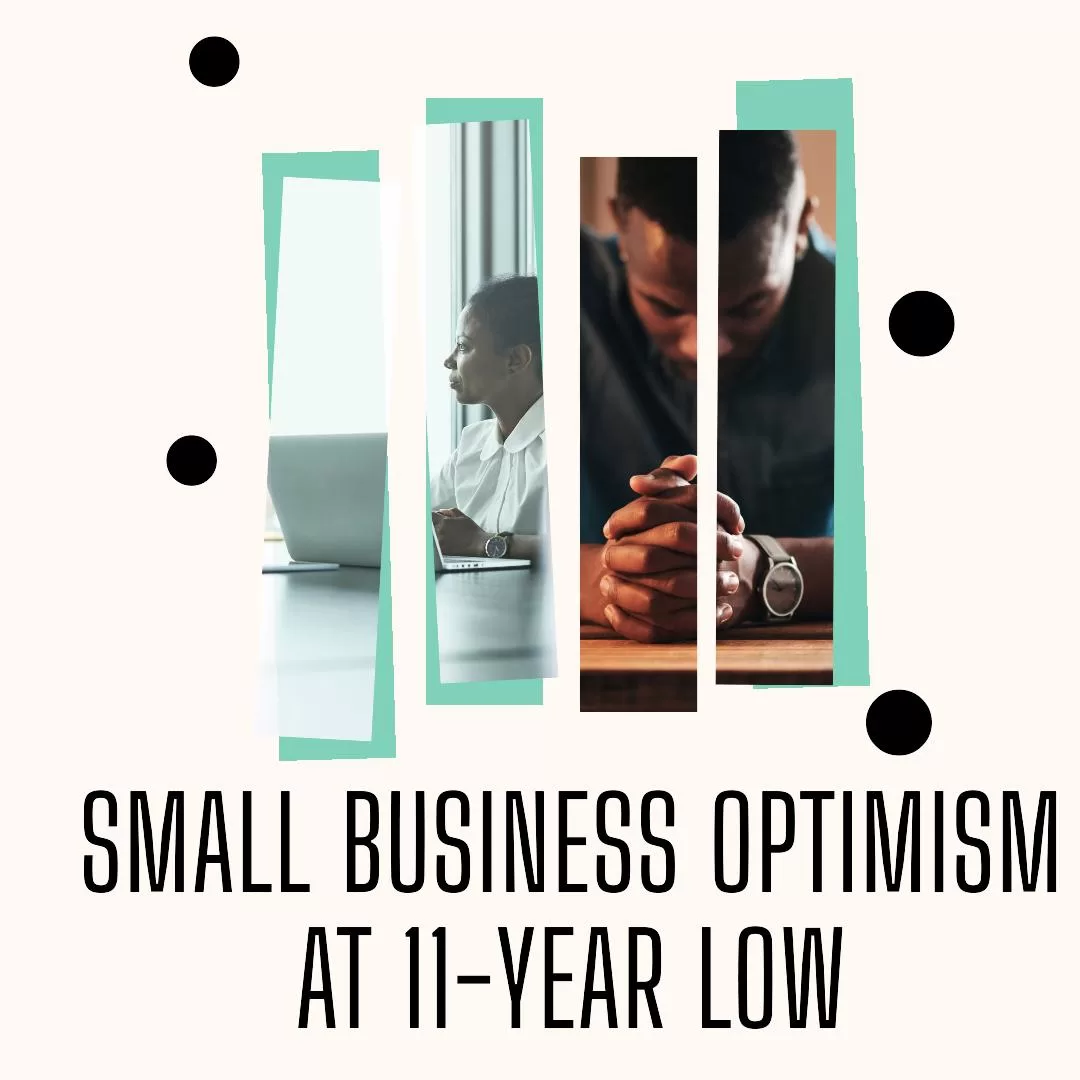Small Business Optimism Reaches 11-Year Low
Small business optimism, a key barometer of economic sentiment and growth prospects, has plummeted to its lowest levels in over a decade, signaling widespread concerns and uncertainties among entrepreneurs and business owners. In this article, we delve into the factors driving this downturn in confidence, explore the implications for the broader economy, and offer insights into strategies for small businesses to weather the storm.

The State of Small Business Optimism:
According to recent surveys and economic indicators, small business optimism has reached its lowest point in 11 years, reflecting mounting challenges and uncertainties facing entrepreneurs. Concerns over economic recovery, rising costs, supply chain disruptions, labor shortages, and regulatory uncertainties have eroded confidence and dampened prospects for growth. As small businesses grapple with these headwinds, sentiment towards future business conditions and investment prospects has soured, casting a shadow over the economic outlook.
Economic Headwinds:
Several factors contribute to the decline in small business optimism, including lingering effects of the COVID-19 pandemic, inflationary pressures, supply chain disruptions, and labor market challenges. Uncertainty surrounding the trajectory of the pandemic, including the emergence of new variants and potential disruptions to economic activity, weighs heavily on business sentiment. Moreover, rising input costs, transportation expenses, and inflationary pressures squeeze profit margins and hinder investment and expansion plans for small businesses.
Supply Chain Disruptions:
Small businesses are particularly vulnerable to supply chain disruptions, as they rely heavily on timely delivery of goods and materials to meet customer demand. Disruptions in global supply chains, including port congestion, shortages of raw materials, and transportation bottlenecks, have led to delays, increased costs, and operational challenges for small businesses. These disruptions not only impact production schedules and inventory management but also strain relationships with customers and suppliers, exacerbating concerns about long-term viability.
Labor Market Challenges:
Labor shortages and workforce constraints pose significant challenges for small businesses, limiting their ability to meet demand, expand operations, and maintain quality standards. Factors contributing to labor market challenges include skills mismatches, demographic shifts, concerns about workplace safety, and disincentives to work due to government stimulus programs. Small businesses struggle to attract and retain qualified employees, leading to increased competition for talent, wage pressures, and operational disruptions.
Strategies for Small Business Resilience:
Despite the challenges and uncertainties, small businesses can take proactive steps to enhance resilience and adaptability in the face of adversity. Embracing technology, diversifying supply chains, optimizing inventory management, and investing in employee training and development are critical strategies for navigating supply chain disruptions and labor market challenges. Moreover, maintaining open communication with customers, suppliers, and stakeholders, and seeking support from government programs and business associations can help small businesses weather the storm and emerge stronger from the crisis.
Conclusion:
As small business optimism hits an 11-year low, entrepreneurs and business owners face unprecedented challenges and uncertainties on multiple fronts. The convergence of economic headwinds, supply chain disruptions, and labor market challenges underscores the need for resilience, adaptability, and proactive strategies to navigate the turbulent waters ahead. By embracing innovation, fostering collaboration, and staying agile in response to changing market dynamics, small businesses can overcome obstacles and position themselves for long-term success in an uncertain and evolving business landscape.
Learn about accounts receivable factoring
Connect with Factoring Specialist, Chris Lehnes on LinkedIn
